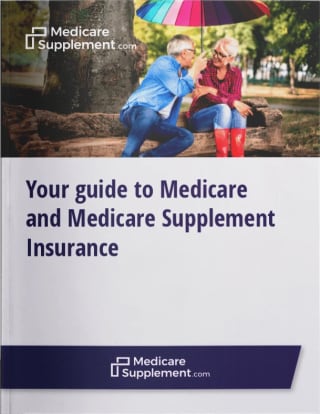Medigap Plan F provides the most benefits of the 10 standardized Medigap plans available in most states. This plan provides full coverage for each of the following:
- Medicare Part A deductible
- Medicare Part A coinsurance
- Medicare Part A hospice care coinsurance or copayment
- Medicare Part B deductible
- Medicare Part B coinsurance or copayment
- Medicare Part B excess charges
- Skilled nursing facility coinsurance
- First three pints of blood used for a transfusion
Lastly, Plan F provides 80 percent coverage of emergency care received outside of the U.S.
Starting in 2020, newly eligible Medicare beneficiaries won't be able to enroll in Medigap Plan F. However, if you already have Plan F prior to 2020, you will be able to keep your plan. If you are eligible for Medicare before 2020 and you don't have Plan F, you may able to buy it in 2020 and beyond.
What costs can a Medigap plan help me pay for?
Let's use Plan F as an example to see how a Medicare Supplement Insurance plan can be worth it for some beneficiaries.
Because Medicare Supplement Insurance is sold by private insurers, the cost of a plan can vary from one location or provider to another (although the benefits of each type of plan remain the same).
The average cost of a Medigap Plan F premium varies depending on location. These average monthly cost of Plan F in 2024 is $202.1
So how does $202 per month (or $2,424 per year) stack up against some of Original Medicare's out-of-pocket costs?
Medicare Part A deductible
The Medicare Part A deductible operates on a “benefit period” cycle. A benefit period begins the day you are admitted to a hospital or skilled nursing facility as an inpatient and ends when you have not been an inpatient for 60 consecutive days.
A benefit period (and therefore your deductible) can reset several times throughout the year.
In 2024, the Part A deductible is $1,632 for each benefit period. That means if you are admitted to a hospital or skilled nursing facility, you are responsible for the first $1,632 before Original Medicare will begin paying.
If you enrolled in Plan F, your 2024 Part A deductible would be taken care of, and your Original Medicare coverage would begin right away.
Medicare Part A coinsurance
The first 60 days of a hospital stay require no coinsurance under Original Medicare. But beginning with day 61, a beneficiary is on the hook for $408 per day in 2024.
It would take only five days of these payments to equal the average annual cost of a Medigap Plan F.
Medicare Part B coinsurance
Once you reach your Part B deductible ($240 per year in 2024), you will typically owe 20 percent of the Medicare-approved amount for doctor's appointments and other services covered under Part B.
If you have to take a ride in an ambulance or have a procedure performed at an outpatient facility, your 20 percent share of the bill can easily add up to more than annual cost of a Medigap plan that would have covered those payments in full, such as Medigap Plan F.
Skilled nursing facility coinsurance
The first 20 days of a stay in a skilled nursing facility are covered in full by Medicare Part A. But beginning with day 21, a coinsurance payment of $204 per day is required in 2024, which is more than the average monthly cost of Medigap Plan F.
What are some other potential benefits of Medicare Supplement Insurance?
Let's use Plan F as an example to see how a Medicare Supplement Insurance plan can be worth it for some beneficiaries.
The numbers above illustrate just a few examples of how a Medicare Supplement Insurance plan can be well worth it for some beneficiaries.
But to fully understand the value Medigap plans can offer, it helps to look beyond the numbers and consider what else a Medigap plan may mean for your health coverage.
- Price predictability
When you visit a doctor without a Medigap plan, you will potentially be on the hook for 20 percent of the bill. The problem is, you don't know how much that bill will be, and therefore you don't know how much you will have to end up paying for the visit.
With a Medigap plan that covers your Part B coinsurance, that 20 percent will be covered. This allows you to better estimate how much you'll spend on your health care in a given month, and it can give you the ability to have more insight and control over your budget.
- Greater freedom
If you visit a non-participating Medicare doctor, they can charge you up to 15 percent more than the Medicare-approved amount for their services. But some Medigap plans cover these costs, known as Medicare excess charges.
This coverage can help give you the flexibility to visit a greater number of doctors and medical suppliers, as you will have some coverage for any Medicare excess charges.
Medigap plans are accepted by any health care provider who accepts Medicare, which means you can use your Medigap plan anywhere in the U.S.A. and are not confined to a plan network.
A Medigap plan with foreign emergency care coverage can offer even more freedom by offering some coverage when you travel abroad.
- Peace of mind
Without a Medigap plan, you may be reluctant to seek out health care simply because of potentially high out-of-pocket costs. A Medigap plan that meets your coverage needs can help you set those worries aside and seek the care you that you need.
Your health insurance choices are unique to your health care needs. Be sure to carefully compare your options and find the coverage that works for you.
Compare Medicare Supplement Insurance plans today
Learn more about how a Medicare Supplement Insurance plan can be worthwhile for your health care needs.




